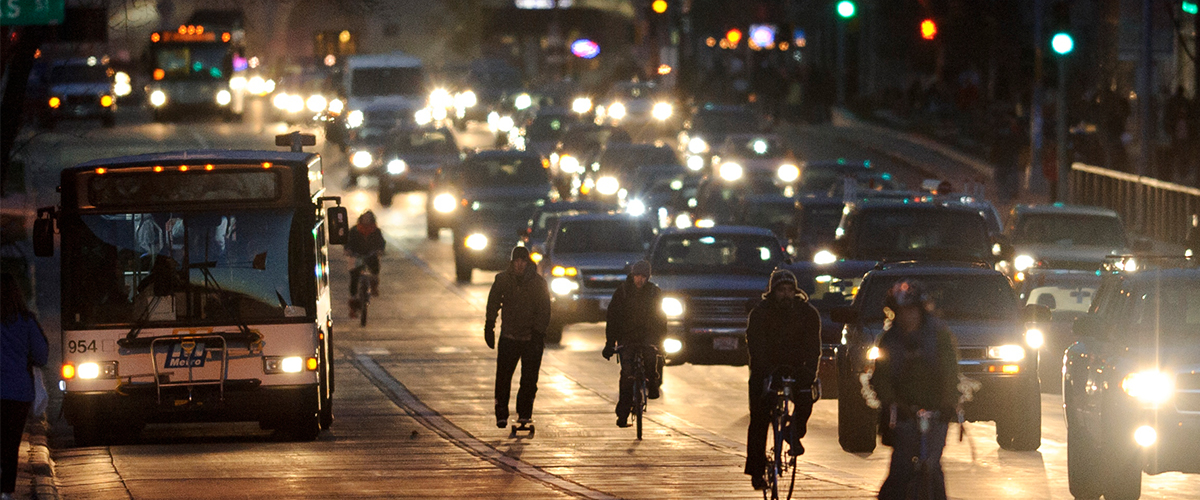
Getting Us from Here to There
The College of Engineering drives improvements in many areas of transportation, including safety, automobile performance, and environmental impact, among many others. Here are a few recent developments.
Mapping Wisconsin traffic deaths
A new interactive map developed in partnership with the Madison news website Channel3000.com gives Wisconsinites a view of the many traffic fatalities that happen annually in the state. Researchers in the UW-Madison Traffic Operations and Safety (TOPS) Lab have been gathering this data for years.
TOPS Lab IT program manager Steven Parker says TOPS researchers worked with the Wisconsin Department of Transportation Bureau of Transportation Safety and Channel 3000 web developers to create an easy-to-use version of this traffic fatality data. Parker has already spent years thinking about how to map traffic accidents, especially to help county-level traffic safety commissions, which are required to conduct quarterly reviews of fatal crashes. “There really traditionally has not been a good way to do this,” Parker says.
Summit addresses sustainable transportation
What role will transportation play in creating a sustainable future? A multidisciplinary group of researchers grappled with this question in May 2015 at the Next Generation Transportation for a Sustainable Future summit. UW-Madison served as the lead institution under the direction of Civil and Environmental Engineering Professor Teresa Adams.
The summit was developed to help frame the next generation of UW-Madison transportation research. It tackled issues of land use, air quality, economic sustainability, and infrastructure management.
GM fuels UW-Madison’s energy research
Energy researchers at UW-Madison are excited about three high-performance dynamometers in the high-bay lab of the Wisconsin Energy Institute (WEI) and in Engineering Hall. Dynamometers, or “dynos,” are devices used to measure the torque, speed, and power produced by rotating electric machines. The dynos were a gift from General Motors.
“Although there are other dynos on campus, none of them have anything close to the power, speed, and dynamic response of these,” says Bruce Beihoff, WEI’s technical director of industry relations. “These new dynos are truly the Swiss Army Knife of research equipment in this field.”
